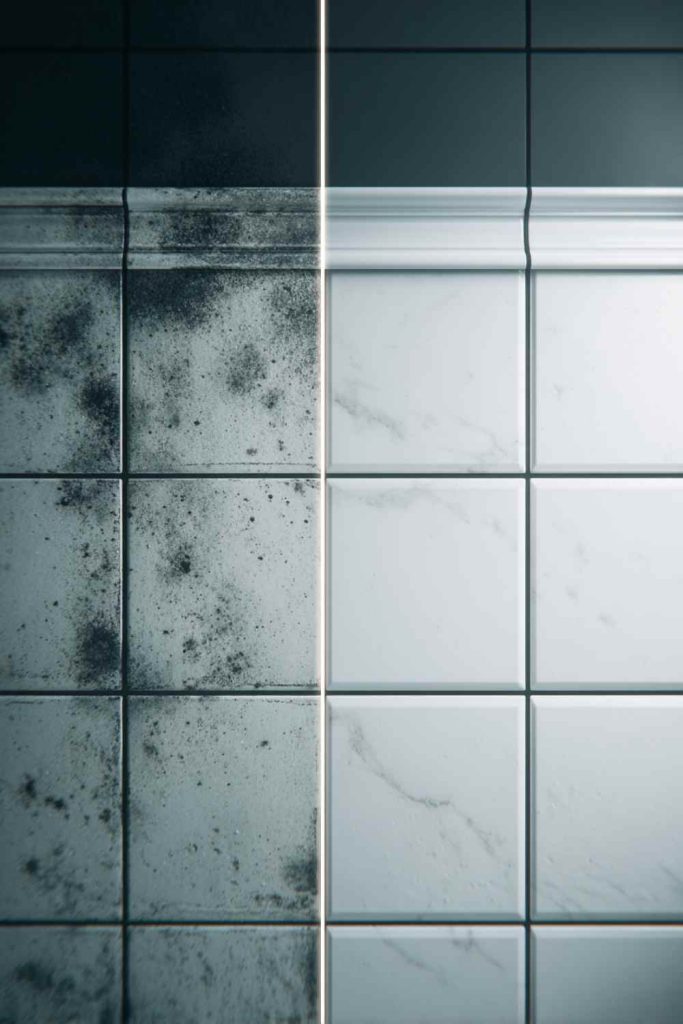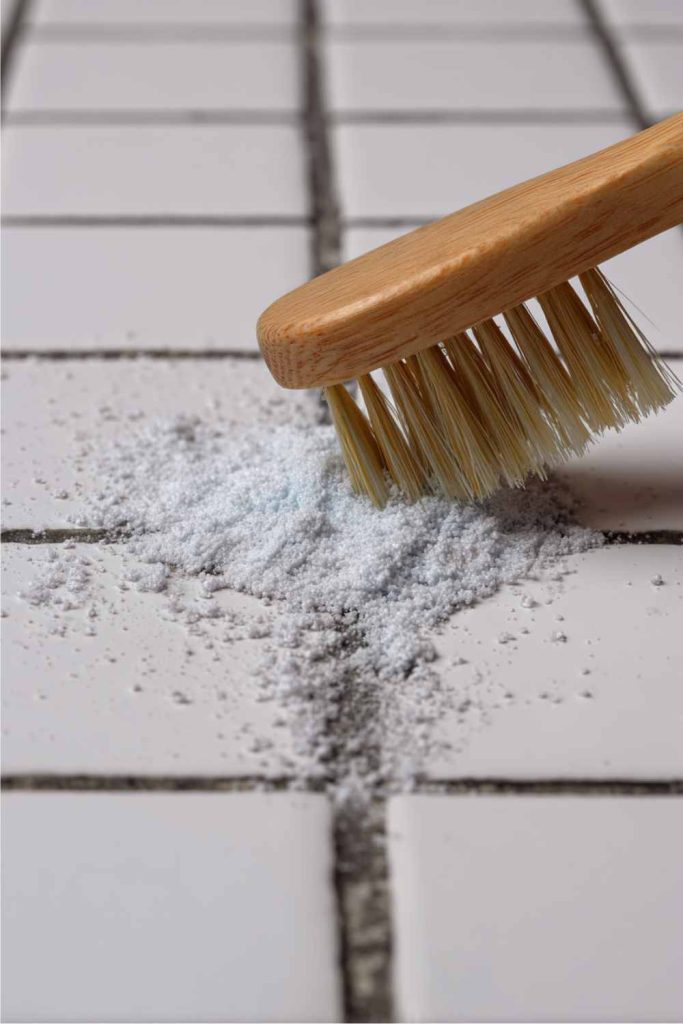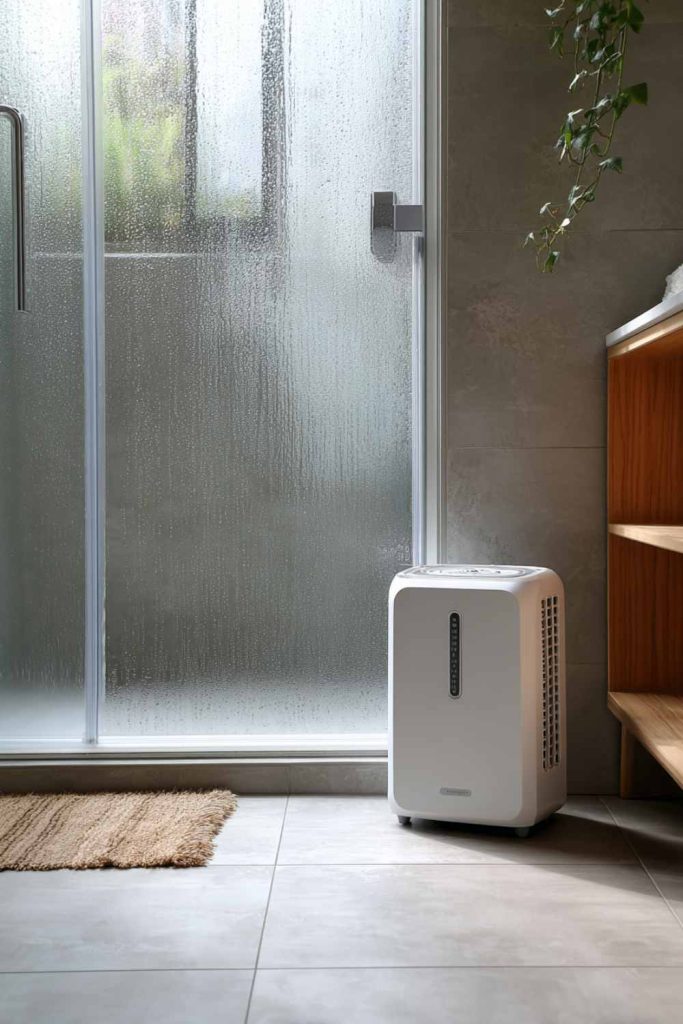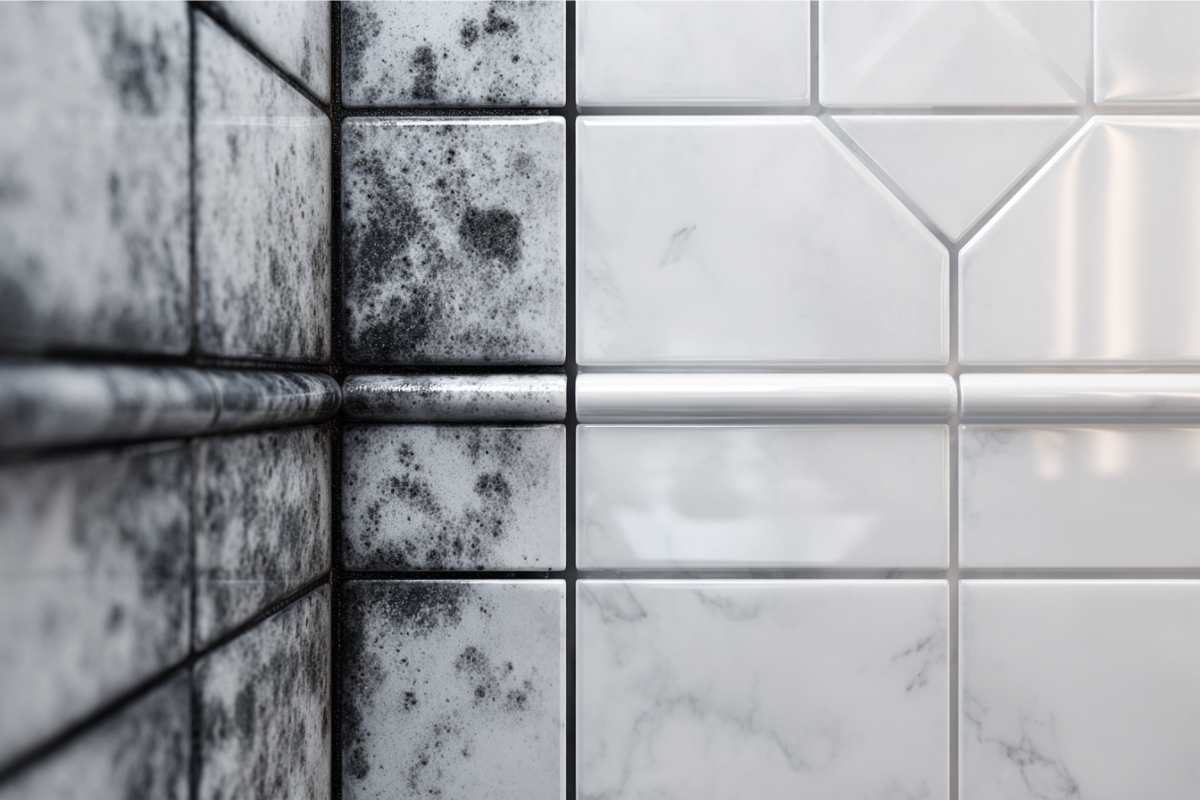Introduction: Why “Get Rid Of Shower Mold” Matters
Shower mold is one of those problems that creeps up slowly and suddenly feels impossible to ignore. It loves warm, damp spaces, which makes your bathroom its favorite hangout spot. Mold thrives in shower corners, grout lines, and caulk seams where moisture lingers, and once it takes hold, it spreads quickly.
It’s more than an eyesore. Mold can trigger allergies, worsen asthma, and cause stubborn respiratory irritation. According to health experts, exposure can lead to sneezing, coughing, watery eyes, and in sensitive individuals, even more serious reactions. That’s why tackling mold isn’t just about keeping your bathroom pretty, it’s about protecting your health and your family’s.
And here’s the thing: showers are perfect breeding grounds. Constant steam, soap residue, poor ventilation, it’s like rolling out a welcome mat for mold colonies. Real Simple even points out that bathrooms without proper airflow practically guarantee mold patches sooner or later.
In this guide, we’ll look at why mold shows up in the first place, the smartest DIY methods to eliminate it, a few real-world hacks (yes, straight from Reddit), and the daily habits that prevent it from coming back. You’ll get practical step-by-step tutorials, expert advice, and answers to common questions, so by the time you’re done reading, you’ll feel ready to win the battle against shower mold for good.
Understanding the Root Causes
The Biology of Mold in Showers
Mold is a fungus. It reproduces through airborne spores that land on damp surfaces and flourish when there’s consistent moisture. In showers, that means grout, caulking, tile edges, even the liner of your shower curtain – all are fair game.
Southern Living explains that mold thrives on porous materials, which is why caulk and grout are so often affected. Water seeps in, and before you know it, you’re looking at black or green patches that don’t scrub away easily.
And here’s the kicker: bleach, the go-to cleaner for decades, doesn’t actually penetrate porous surfaces. GE Sealants warns that bleach often just whitens the surface mold but leaves the roots intact beneath the caulk. So if you’re only using bleach, you’re often just bleaching stains rather than solving the problem.
Contributing Factors in Bathrooms
So what exactly invites mold in? A few repeat offenders:
- Poor ventilation: Showers without an exhaust fan or a window trap steam. Mike Diamond Services highlights how steam lingers long after a shower and creates the perfect conditions for mold spores.
- Wet items left behind: Towels on the floor, a shower mat that never dries, or a curtain left bunched together. Reddit users joke about how a closed curtain is practically a greenhouse for mold.
- Clogged drains: The Spruce points out that drains are a sneaky hotspot. Soap scum plus standing water equals a tiny mold habitat.
- The wrong caulk: Many bathrooms are finished with latex or vinyl caulk, which can absorb water. Mold-resistant silicone performs much better, according to both Bogleheads forum members and Better Homes & Gardens.
The takeaway? Mold isn’t inevitable – it’s usually the result of a few small but fixable habits.

Effective DIY Removal Methods
Natural & Mild Solutions
Let’s start with gentle approaches that are surprisingly effective.
- White vinegar: Affordable, accessible, and effective against about 82% of mold species. Spray it undiluted or in a 1:1 mix with water, let it sit for an hour, then wipe and dry. The Sun reports this simple trick works wonders on grout and non-porous surfaces.
- Hydrogen peroxide (3–7%): A good option for semi-porous areas like grout. Apply, let it fizz, then wipe. Multiple applications may be needed, and sealing afterward helps prevent regrowth.
These natural cleaners are safer than bleach on many surfaces, and they don’t produce harsh fumes.
Bleach-Based Approaches
Of course, bleach still has its place. Used properly, it can remove surface mold stains and sanitize tiles.
- Bleach solution: Mix ¼ cup bleach per gallon of water. Apply to affected areas, keep the surface wet for at least 5–10 minutes, then rinse and dry.
- The Reddit “toilet paper sausage” hack: Roll strips of toilet paper into long ropes, soak them in bleach, press them along moldy caulk, and leave overnight. In the morning, the mold is gone – no scrubbing required. Several Reddit threads swear by this method, and it’s gained near cult-status among DIY cleaners.
That said, remember: bleach only addresses surface mold. If the caulk is deeply infested, the mold will return.
Step-by-Step: Removing Mold from Shower Caulking
Here’s a safe, structured method:
- Prep and protect: Ventilate the bathroom, wear gloves and a mask, and lay down towels or plastic to protect surrounding surfaces.
- Pick your solution: Vinegar, hydrogen peroxide, baking soda paste, or a bleach mix (1:3).
- Apply generously: Spray or spread onto the moldy caulk. Let it sit for several minutes to penetrate.
- For stubborn mold: Use the bleach-paper hack and leave it overnight.
- Scrub: Use a toothbrush or sponge to scrub loosened mold.
- Rinse and dry: Rinse with clean water and towel dry completely.
- Re-caulk if needed: If the caulk is compromised, remove it and replace with 100% silicone caulk. Smooth the new bead with your finger for a clean finish.
Yes, it’s a little work, but once done right, the mold won’t return anytime soon.

Real-Talk Examples & Case Studies
Reddit Hacks That Actually Work
Sometimes the most practical advice comes from regular people. One Reddit user discovered that scrubbing endlessly didn’t help, but laying toilet-paper “sausages” soaked in bleach against the moldy caulk overnight erased it completely. Others chimed in to confirm the same results.
It’s not elegant, but it’s effective and it saves you from back-breaking scrubbing sessions.
Expert Pro Tips
Cleaning pros add their own tricks:
- Drains: The Spruce suggests flushing drains with one gallon of hot water mixed with one cup vinegar, letting it sit, then following with another gallon of water. This not only clears mold but also reduces odor.
- Curtain liners: Toss them in the washing machine with a couple of towels (to scrub the liner as it washes). Add ½ cup vinegar during the rinse cycle. For stubborn spots, soak in vinegar first.
- Routine sprays: Ollie Lyon, a cleaning expert quoted in The Sun, reminds that vinegar kills up to 82% of mold species. Keeping a spray bottle handy and giving your shower a quick spritz after each use dramatically lowers the chances of mold reappearing.
Prevention Strategies for a Mold-Free Shower
Getting rid of mold is step one. Keeping it away is the real victory.
Ventilation & Drying Habits
- Run the exhaust fan during your shower and leave it on for 20–30 minutes afterward. No fan? Crack a window.
- Keep indoor humidity below 50%. A small bathroom dehumidifier can make a big difference.
- After each shower, squeegee or towel-dry the walls, floor, and glass. Leave the curtain or shower door open to let moisture escape.
These little steps add up. Think of it like brushing your teeth, daily effort prevents bigger problems later.
Material & Product Choices
- Use 100% silicone caulk that’s mold resistant. Latex or vinyl caulk will betray you over time.
- Seal grout lines regularly so water can’t seep in and feed hidden mold colonies.
Cleaning Habits & Lifestyle Adjustments
- Clean your shower weekly.
- Wash liners and curtains monthly or more often if you notice spots.
- Spray vinegar on mold-prone surfaces a few times a week.
- Keep shower shelves uncluttered so air circulates.
- Fix leaks immediately; even a tiny drip can keep a corner damp enough to restart mold growth.

Examples and Mini-Tutorials
How to Clean a Moldy Shower Drain
- Steam the drain with a handheld steamer or pour boiling water down.
- Scrub inside with a small brush.
- Mix 1 gallon hot water with 1 cup vinegar, pour it down, wait 5 minutes, then flush with another gallon.
This approach outperforms bleach because vinegar penetrates better and is gentler on pipes and surfaces.
How to Keep Shower Curtain Liners Fresh
- Machine-wash with hot water, a couple of towels, and ½ cup vinegar in the rinse.
- For hand-washing, soak in vinegar, scrub, then rinse.
- After every shower, spray with vinegar-water solution and ventilate until dry.
FAQ Section
Can I use bleach or vinegar, what’s better?
Bleach whitens surface mold but doesn’t always kill the roots in porous materials. Vinegar and hydrogen peroxide penetrate deeper, making them better long-term options.
Is it safe to leave cleaning solutions on overnight?
Yes. Tricks like bleach-soaked toilet paper or an overnight vinegar soak are safe and effective as long as you keep the bathroom ventilated and wear protective gear.
How often should I clean to keep mold from coming back?
Weekly shower cleaning is the baseline. Wash curtains monthly, wipe surfaces daily, and spritz vinegar a few times a week. Consistency is key.
When should I call a professional?
If mold covers large areas, keeps coming back despite cleaning, or if you suspect it’s behind walls or under flooring, it’s time to call a mold remediation specialist.
Conclusion
Shower mold may be stubborn, but it’s not unbeatable. Once you understand why it forms, you can tackle it with the right cleaners, whether that’s vinegar, hydrogen peroxide, or even that quirky toilet-paper bleach hack. And more importantly, with small daily habits like drying surfaces and improving ventilation, you can prevent it from ever becoming a recurring nightmare.
Consistency, ventilation, and smart product choices – that’s the trifecta of a clean, healthy, mold-free shower.


